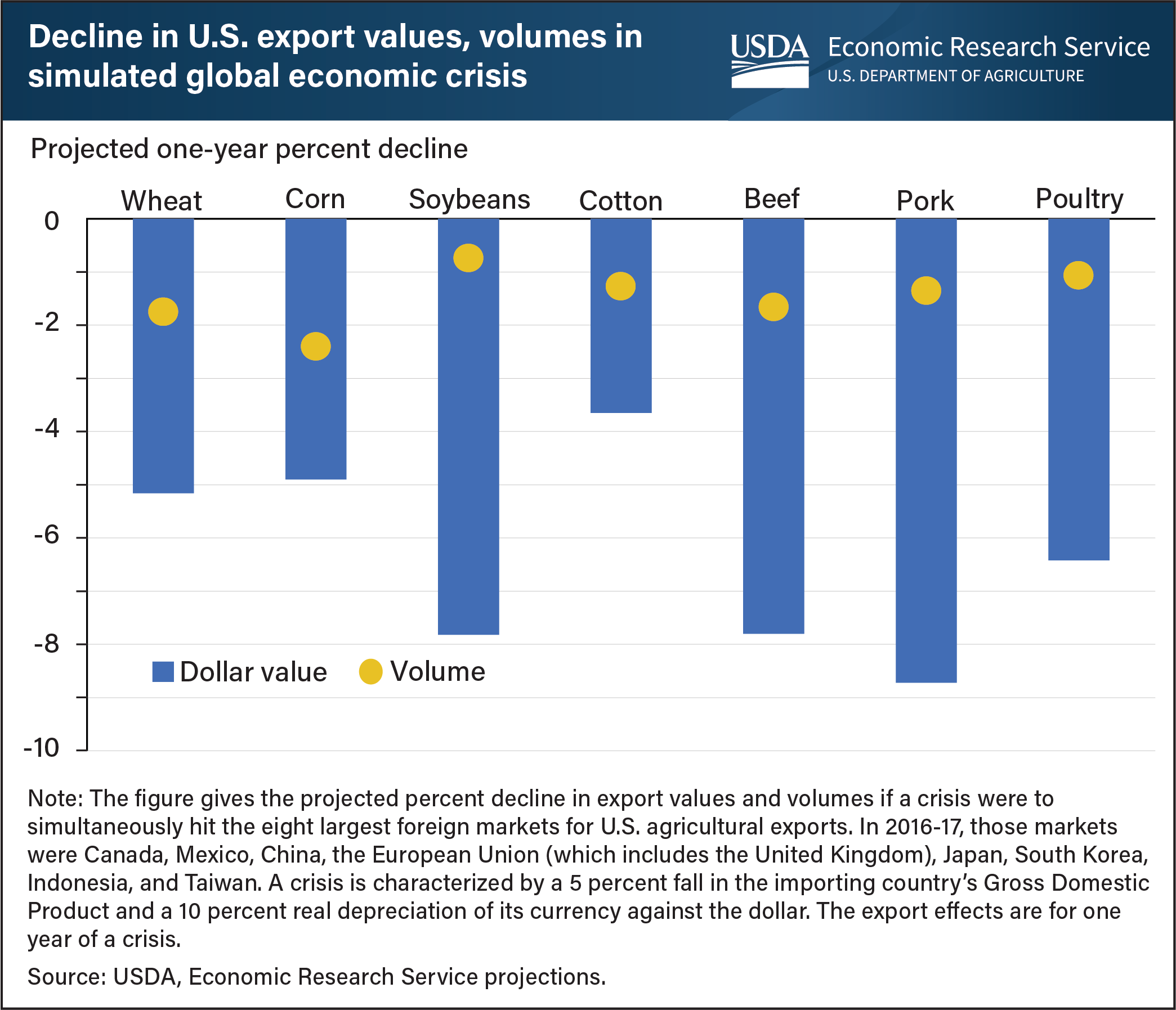U.S. agricultural exports vulnerable to global economic downturns
- by William M. Liefert
- 5/4/2021

The United States is a major exporter of agricultural products, with about 20 percent of its farm output sold abroad. Economic crises in foreign markets typically reduce U.S. export sales. Economic crises decrease countries’ Gross Domestic Product (GDP) and consumer demand, including demand for imported agricultural goods. Crises also often weaken, or depreciate, countries’ currency against the U.S. dollar, which lowers their imports by making foreign products more expensive compared with domestically produced substitutes. To examine how a worldwide economic crisis might affect U.S. agricultural exports, researchers at USDA’s Economic Research Service (ERS) simulated a hypothetical economic crisis in the eight largest U.S. foreign agricultural markets. The exercise indicated that the value of U.S. exports of the seven commodities given in the chart could decline in the year of an economic crisis by $4 billion, an export drop of 6.6 percent (using average 2017-19 export volumes as the base). Model results show the value of U.S. exports of soybeans, beef, and pork falling by around 8 percent, and exports of wheat and corn by about 5 percent. The export value for a good equals its export volume multiplied by the trade price. Export values in the ERS exercise drop by a greater percentage than export volumes because the global economic crisis substantially decreases world demand, and thereby lowers prices, for traded agricultural products. The results of this exercise can provide insight into how the current world economic crisis caused by Coronavirus COVID-19 is affecting U.S. agricultural exports. This chart appears in the Economic Research Report Economic Crises and U.S. Agricultural Exports, released in April 2021.

